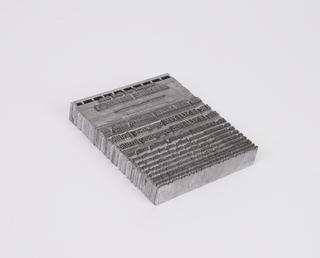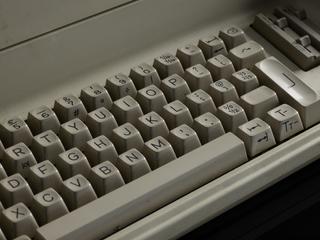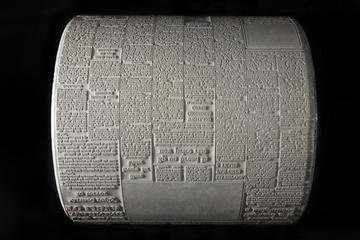
Monotype Lasercomp 70i Composing Machine
- Made:
- 1987
Lasercomp 70i composing machine, 1987, from the Monotype Corporation at the Monotype Works in Surrey. This represents a newer generation of composition machine which stored the shapes of letters in its memory and scanned them whole lines at a time using lasers.
Lasercomp, a digital laser phototypesetter, was first introduced in 1976 and was the world's first fully digital laser type and imagesetting system. It was a significant development for the imaging of pages complete with text and graphics.
In 1979 a new Centre for Advanced Research was established in the Science Park at Cambridge. It was led by David Hedgeland who was closely involved in the development of the Lasercomp. The Monotype Corporation won the Queen's Award (its second) for technological innovation for the Lasercomp in 1980. Various Lasercomps were developed over the next decade.
There were Lasercomp typesetting systems that produced text only and others that could output integrated text and images. The Lasercomp 70i refers to text that can be output with 70 pica width. The 'i' refers to 'imagesetter' which can include integrated half tone graphics (there was also a Lasercomp 70, 100 and 100i). The imagesetters were the most versatile. Features include 1000 lines per inch resolution; up to 15 inch per minute output speed; a wide range of electronic variations (expand, condense, rotation, slanting, and electronic rules)); 200 founts ranging from 5pt to 96pt; interfacing to more than 60 front end systems. It also needed floppy discs, output to rolls of paper, film or flexible plate, a computer, software, and an electrical supply.
Details
- Category:
- Printing & Writing
- Collection:
- Monotype Corporation Collection
- Object Number:
- 2024-449
- Materials:
- metal (unknown) and plastic (unidentified)
- Measurements:
-
overall: 1330 mm x 1050 mm x 750 mm,
- type:
- composing machine




